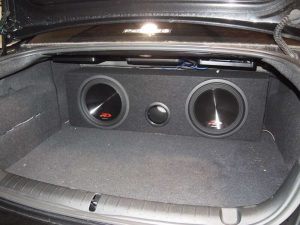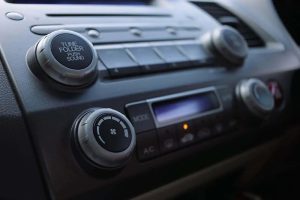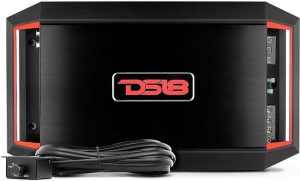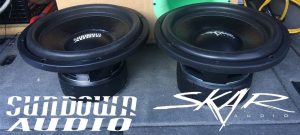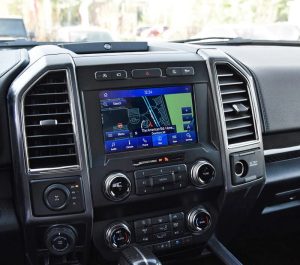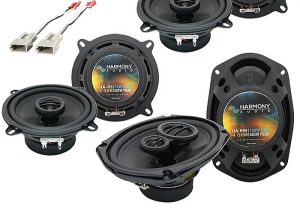The Q factor in audio shapes how sound behaves in equalizers, filters, and audio systems. It stands as a critical concept for anyone diving into audio engineering, music production, or even choosing the right car audio setup. But what exactly is the Q factor? Why does it matter for your listening experience? This guide breaks down the Q factor in simple terms, explores its impact on sound quality, and offers practical insights for applying it in real-world audio scenarios. By the end, you’ll grasp how this technical term influences everything from crisp vocals to booming bass in your favorite tracks.
Contents
- Defining the Q Factor in Audio
- Why the Q Factor Matters in Audio Systems
- How the Q Factor Works in Equalizers
- The Q Factor in Speakers and Subwoofers
- Q Factor in Different Audio Environments
- Practical Tips for Using the Q Factor
- Common Q Factor Misconceptions
- The Science Behind the Q Factor
- Q Factor and Music Genres
- How to Test and Adjust Q Factor Settings
- Q Factor in Modern Audio Technology
- Final Thoughts on Q Factor in Audio
Defining the Q Factor in Audio
The Q factor, short for “quality factor,” measures the bandwidth or selectivity of a filter in an audio system. In plain language, it determines how narrowly or widely a filter affects frequencies around a central point. Think of it as the precision tool that audio engineers use to tweak specific parts of the sound spectrum without disturbing others.
A high Q factor means a filter targets a tight range of frequencies, creating a sharp, focused effect. Conversely, a low Q factor spreads the filter’s influence across a broader range, producing a smoother, more gradual change. This balance of precision and breadth defines how the Q factor shapes audio output, whether in a studio equalizer or your car’s sound system.
To visualize this, imagine tuning a guitar string. A high Q factor is like plucking one string with laser focus, while a low Q factor is like strumming multiple strings at once. Both approaches have their place, depending on the sound you’re chasing.
Why the Q Factor Matters in Audio Systems
The Q factor plays a pivotal role in crafting the sound you hear. It directly affects how audio equipment processes frequencies, which in turn impacts clarity, balance, and overall sound quality. Here’s why it’s a big deal:
- Precision in Sound Shaping: Audio engineers rely on the Q factor to boost or cut specific frequencies. For example, if a vocal track has a harsh 3 kHz spike, a high Q factor lets them reduce that exact frequency without muddying the rest of the voice.
- Control Over Resonance: In speakers and subwoofers, the Q factor influences how much a driver resonates at certain frequencies. A well-tuned Q factor ensures tight, controlled bass instead of boomy, overwhelming low-end.
- Tailored Listening Experiences: Whether in a car stereo or a home theater, adjusting the Q factor helps customize sound to suit the environment. Tight spaces like cars often need precise Q settings to avoid frequency overlap and distortion.
Understanding the Q factor empowers you to make informed choices about audio gear and settings, ensuring your music sounds its best.
How the Q Factor Works in Equalizers
Equalizers (EQs) serve as the primary playground for the Q factor in audio production. An EQ lets you boost or cut specific frequencies, and the Q factor controls how surgical or sweeping those changes are. Let’s break it down with a real-world example.
Suppose you’re mixing a song, and the kick drum feels too boomy around 100 Hz. You decide to cut that frequency using an EQ. Here’s how the Q factor comes into play:
- High Q Setting: You set a high Q value, say 4.0. The EQ targets a narrow band around 100 Hz, reducing the boom without affecting nearby bass guitar frequencies. The result? A cleaner, punchier kick drum.
- Low Q Setting: You choose a low Q value, like 0.5. The EQ cuts a wide range of frequencies, from 80 Hz to 120 Hz. This smooths out the low-end but might dull the bass guitar’s warmth.
Most digital audio workstations (DAWs) and hardware EQs let you adjust the Q factor with a knob or slider. Some even display a visual curve, showing how steep or gentle the filter is. This hands-on control makes the Q factor a powerful ally for shaping sound.
The Q Factor in Speakers and Subwoofers
Beyond equalizers, the Q factor influences how speakers and subwoofers perform. In these devices, the Q factor describes the resonance behavior of the driver (the part that vibrates to produce sound). A speaker’s Q factor determines how it handles frequencies, especially in the low-end.
- High Q Speaker: A speaker with a high Q factor resonates strongly at a specific frequency, often producing a peaky, exaggerated response. This can lead to boomy bass that sounds powerful but lacks control.
- Low Q Speaker: A speaker with a low Q factor has a flatter, more controlled response. It reproduces bass accurately but may lack the punch some listeners crave.
Subwoofers, in particular, rely on the Q factor to balance impact and precision. For example, a car subwoofer with a Q factor tuned for tight bass (around 0.7) delivers clean, rhythmic low-end, perfect for hip-hop or electronic music. A higher Q factor (around 1.0 or more) might suit rock or classical, where resonant bass adds warmth.
When shopping for speakers or subwoofers, check the Q factor specs. Pair them with your amplifier and listening space for optimal performance. A mismatched Q factor can lead to muddy or underwhelming sound.
Q Factor in Different Audio Environments
The ideal Q factor varies depending on where you’re listening. Let’s explore how it applies in common audio setups:
Car Audio Systems
Cars present unique acoustic challenges—small spaces, reflective surfaces, and road noise all affect sound. The Q factor helps fine-tune car audio systems for clarity and impact. For instance:
- Midrange Frequencies: A high Q factor sharpens vocals and instruments, cutting through road noise.
- Bass Frequencies: A moderate Q factor keeps subwoofers tight, preventing bass from overpowering the cabin.
Many car stereos include preset EQ curves with adjustable Q factors. Experiment with these settings to find the sweet spot for your vehicle.
Home Audio and Hi-Fi Systems
In home audio, the Q factor shapes how speakers interact with your room. Large rooms may benefit from a lower Q factor for smooth, even sound distribution. Smaller rooms might need a higher Q factor to focus sound and avoid reflections. High-end hi-fi systems often let audiophiles tweak the Q factor for perfect tonal balance.
Studio Monitoring
In recording studios, engineers use the Q factor to ensure accurate sound reproduction. Studio monitors with a neutral Q factor (around 0.5 to 0.7) provide a flat response, letting producers hear the mix as it truly is. When mixing, engineers adjust the Q factor on EQs to sculpt tracks without coloring the sound unnaturally.
Practical Tips for Using the Q Factor
Ready to harness the Q factor in your audio setup? Here are actionable tips to get started:
- Start with a Neutral Q: When using an EQ, begin with a moderate Q value (around 1.0). This provides a balanced starting point before fine-tuning.
- Listen Critically: Trust your ears. Make small Q factor adjustments and listen to how they affect the sound. A/B testing (toggling between settings) helps pinpoint the best value.
- Match Q to the Source: Use a high Q factor for surgical fixes, like removing a harsh resonance. Opt for a low Q factor for broad tonal shaping, like warming up a vocal track.
- Consider the Environment: In a car or small room, lean toward higher Q values for precision. In open spaces, lower Q values create a more natural sound.
- Check Gear Specs: When buying speakers or subwoofers, review the Q factor in the technical specs. Choose gear that aligns with your listening preferences and setup.
Common Q Factor Misconceptions
Despite its importance, the Q factor often sparks confusion. Let’s clear up a few myths:
- Myth: Higher Q is Always Better: A high Q factor isn’t inherently superior. It’s about context—sometimes a low Q factor creates a more natural sound.
- Myth: Q Factor Only Matters for Pros: Even casual listeners benefit from understanding Q. It helps you optimize your car stereo or home theater for better sound.
- Myth: Q Factor Fixes Everything: While powerful, the Q factor is just one tool. Pair it with proper speaker placement, room treatment, and quality gear for the best results.
The Science Behind the Q Factor
For the curious, the Q factor has a mathematical foundation. It’s defined as the ratio of the center frequency to the bandwidth of a filter. In formula terms:
Q = f₀ / BW
- f₀: The center frequency (e.g., 100 Hz)
- BW: The bandwidth, or the range of frequencies affected (e.g., 20 Hz)
A higher Q value means a smaller bandwidth, resulting in a sharper filter. A lower Q value widens the bandwidth, affecting more frequencies. This math underpins why the Q factor feels so precise in audio applications.
In speakers, the Q factor ties to the driver’s resonance. It’s calculated based on the speaker’s electrical and mechanical properties, like damping and compliance. While you don’t need to crunch numbers daily, knowing the science helps demystify the term.
Q Factor and Music Genres
Different music genres demand different Q factor settings for optimal playback. Here’s a quick guide:
- Pop and EDM: Use a moderate Q factor for punchy bass and clear vocals. Tight subwoofer settings (Q around 0.7) keep beats crisp.
- Rock and Metal: A slightly higher Q factor emphasizes guitar resonance and kick drum impact. Subwoofers with Q around 0.9 add warmth.
- Classical and Jazz: Lean toward a lower Q factor for smooth, natural sound. This preserves the nuance of acoustic instruments and orchestral dynamics.
- Hip-Hop: A high Q factor on mids and highs sharpens vocals, while a moderate Q on bass ensures powerful, controlled low-end.
Experiment with these starting points and adjust based on your system and preferences.
How to Test and Adjust Q Factor Settings
Testing the Q factor doesn’t require fancy tools—just your ears and some patience. Follow these steps:
- Play Familiar Tracks: Choose songs you know well, with a mix of bass, mids, and highs.
- Adjust Gradually: Tweak the Q factor on your EQ or audio system in small increments. Listen for changes in clarity, balance, and impact.
- Use Reference Tracks: Compare your settings to professionally mixed tracks in the same genre. This helps you gauge if your Q factor is on point.
- Test in Context: Listen in your car, home, or studio environment. Room acoustics and speaker placement affect how Q settings sound.
- Save Presets: Many audio systems let you save EQ presets. Create a few with different Q factor settings for various genres or moods.
If you’re using software like a DAW, try sweeping the Q factor while boosting a frequency to “find” problem areas. This technique reveals how Q shapes the sound in real time.
Q Factor in Modern Audio Technology
Today’s audio gear makes Q factor adjustments more accessible than ever. Digital signal processors (DSPs) in car stereos, smart speakers, and home theater systems include user-friendly Q controls. Apps like Equalizer APO or hardware like miniDSP let hobbyists fine-tune Q settings with precision.
Wireless earbuds and headphones also use Q factor algorithms to optimize sound for different environments. For example, noise-canceling earbuds might adjust the Q factor dynamically to balance bass in noisy settings like a subway.
As audio tech evolves, the Q factor remains a cornerstone of sound design. It bridges the gap between raw hardware and the emotional impact of music.
Final Thoughts on Q Factor in Audio
The Q factor in audio isn’t just a technical term—it’s the key to unlocking better sound. By controlling how filters and speakers handle frequencies, it shapes everything from studio mixes to car stereo basslines. Whether you’re a music producer, audiophile, or casual listener, understanding the Q factor helps you make smarter choices about gear and settings.
Take time to experiment with Q factor adjustments in your audio system. Listen closely, trust your ears, and tailor the sound to your space and style. With a little practice, you’ll turn good audio into great audio, making every song a richer experience.
Got questions about tweaking your Q factor or choosing the right audio gear? Drop a comment below or explore our other guides for more tips on elevating your sound game.

